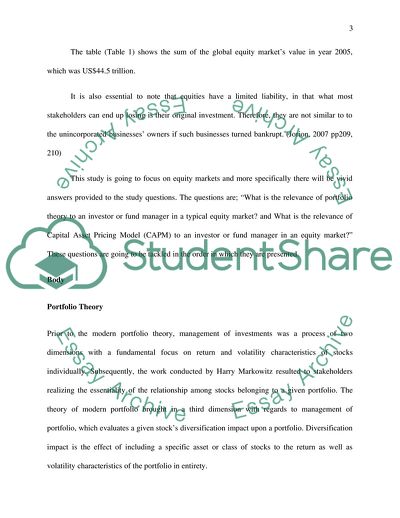Cite this document
(What Is the Relevance of Portfolio Theory to an Investor or Fund Manag Research Paper - 2, n.d.)
What Is the Relevance of Portfolio Theory to an Investor or Fund Manag Research Paper - 2. Retrieved from https://studentshare.org/finance-accounting/1728627-critically-analyse-the-relevance-of-portfolio-theory-and-the-capital-asset-pricing-model-capm-to-an-investor-or-fund-manager-in-the-equity-markets
What Is the Relevance of Portfolio Theory to an Investor or Fund Manag Research Paper - 2. Retrieved from https://studentshare.org/finance-accounting/1728627-critically-analyse-the-relevance-of-portfolio-theory-and-the-capital-asset-pricing-model-capm-to-an-investor-or-fund-manager-in-the-equity-markets
(What Is the Relevance of Portfolio Theory to an Investor or Fund Manag Research Paper - 2)
What Is the Relevance of Portfolio Theory to an Investor or Fund Manag Research Paper - 2. https://studentshare.org/finance-accounting/1728627-critically-analyse-the-relevance-of-portfolio-theory-and-the-capital-asset-pricing-model-capm-to-an-investor-or-fund-manager-in-the-equity-markets.
What Is the Relevance of Portfolio Theory to an Investor or Fund Manag Research Paper - 2. https://studentshare.org/finance-accounting/1728627-critically-analyse-the-relevance-of-portfolio-theory-and-the-capital-asset-pricing-model-capm-to-an-investor-or-fund-manager-in-the-equity-markets.
“What Is the Relevance of Portfolio Theory to an Investor or Fund Manag Research Paper - 2”. https://studentshare.org/finance-accounting/1728627-critically-analyse-the-relevance-of-portfolio-theory-and-the-capital-asset-pricing-model-capm-to-an-investor-or-fund-manager-in-the-equity-markets.


